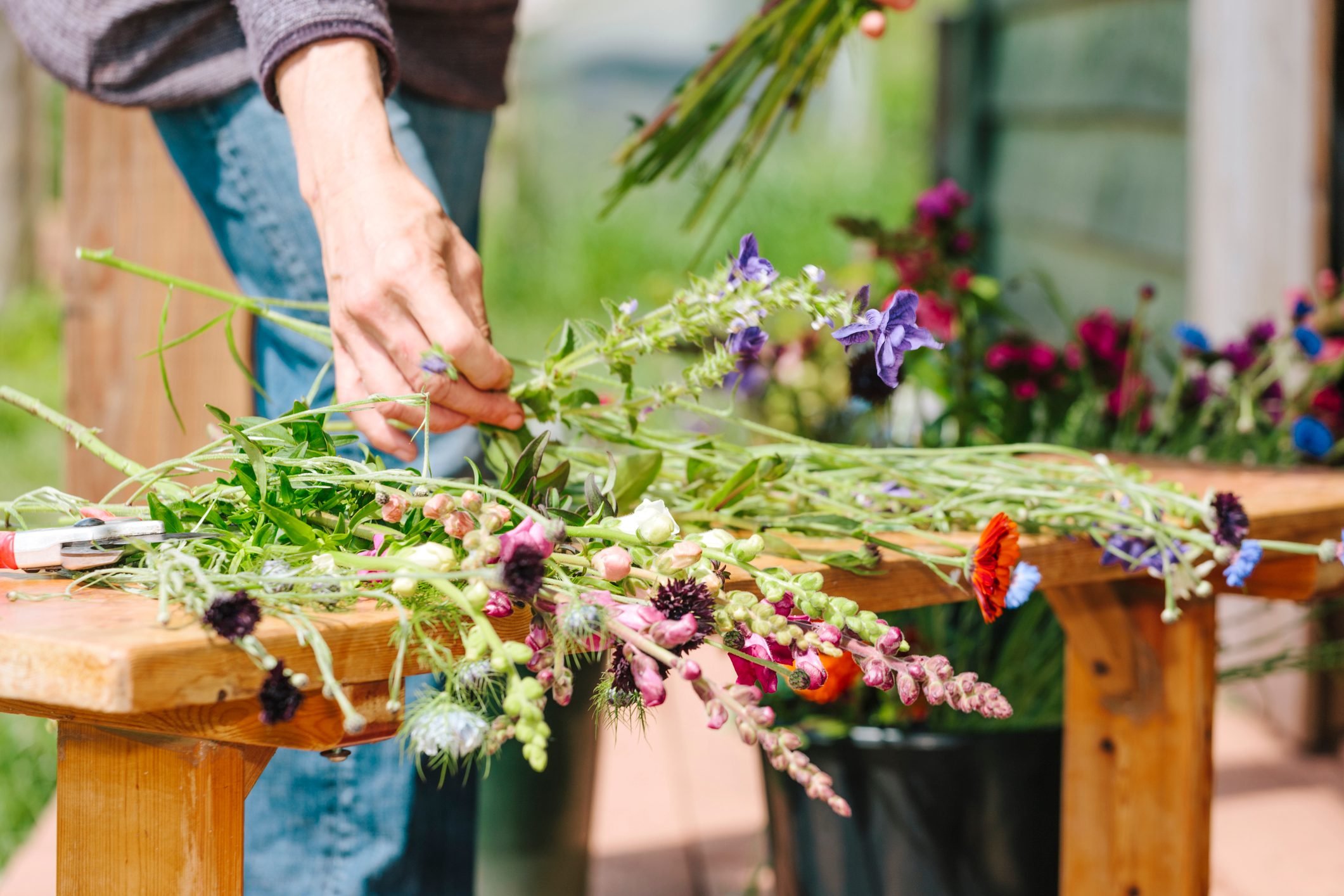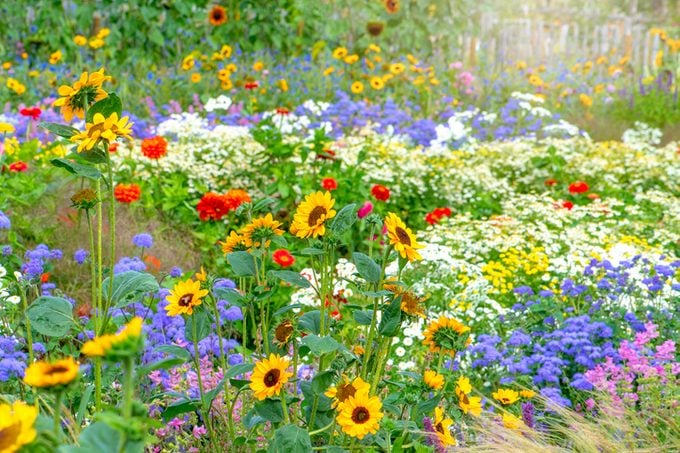If you love farm-fresh bouquets of flowers in your home, why not try growing them yourself? It's easier than you may think.

How to Grow a Cut Flower Garden

Nothing beats the feeling of strolling into a farmer’s market and spying rows upon rows of gorgeous, fresh-cut flowers. For just a few bucks, you can take home a fragrant, vibrant bouquet to instantly brighten up your home.
But what if you didn’t even need to go to the farmer’s market to harvest those beautiful blooms? More and more gardeners are opting to start their own cut flower gardens—gardens of flowers meant specifically to build bouquets with—and reaping the benefits. Not only do you get the freshest flowers possible, but you also are likely to find a sense of fulfillment in growing your own blooms.
Fortunately, starting a cut flower garden is now easier than ever! Here’s what you need to know about growing your own long-stemmed flowers.
What Do I Need to Start a Cut Flower Garden?
To get started, all you really need is a suitable patch of yard space that receives ample sunlight and some nourishing potting mix. Some gardeners like to grow in-ground, while others prefer using raised beds or containers. If drainage or quality are particular issues for your soil, we recommend using raised beds.
Once you’ve determined where your cut flower garden will be and what vessels it might grow in, it’s time to source seeds for the flowers you wish to grow.
What Are the Easiest Flowers to Grow in a Cut Flower Garden?
When acquiring cut flower seeds, it’s important to take into consideration what flowers may grow best in your climate. Be sure to check your plant hardiness zone and compare it to the zones listed on the back of seed packets.
From there, you’ll want to mostly select hardy and half-hardy annuals, according to Louise Curley, a gardening expert from Amateur Gardening magazine. These varietals are often called “cut and come again” flowers, as they produce more flowers after you pick them. Some excellent self-replenishing choices include cosmos, zinnias, scabious and sweet peas. Other pertinent annuals are sunflowers, calendulas, bachelor’s buttons, larkspurs, pinks and gladioluses.
Once you’ve selected the “backbone” of annual cut flowers, you can fill in your garden with bulbs, biennials and foliage. Beautiful beginner-friendly bulbs include dahlias, daffodils, lilies and hyacinths. Biennials could include foxgloves, hollyhocks, stock, and sweet william, while foliage could include greens like euphorbia, bells of Ireland, or bupleurum. By planting a variety of blooms, you can ensure you’ll have cut flowers in spring, summer and fall.
How Do I Plan and Space My Cut Flower Garden?

Before you plant any seeds, it’s a good idea to design your garden bed first. Using some paper and a pencil, draw your garden to scale, envisioning where you’d like the flowers to be. Take into account their “spread” ranges as listed on the seed packets, as well as their heights—some taller varieties may provide useful shade for shorter varieties that thrive in less direct sunlight. Additionally, make sure to include plenty of paths in the garden so that you can easily access each plant for watering, weeding and cutting.
How Do I Plant My Cut Flower Garden?
Once you’re satisfied with your paper layout, it’s time to plant. Mark your placements in your flower beds and remove any interfering weeds. Then, till your soil with the potting mix, organic material, and some fertilizer. When you’re ready to sow the seeds, consider staking taller flowers, or planting them somewhat close together to support each other. Then, plant the seeds according to the instructions on the back of the seed packets.
How Do I Maintain a Cut Flower Garden?
For the most part, caring for a cut flower garden is like caring for any other garden: be sure to water, weed and fertilize regularly. However, you’ll also want to build time in your routine for deadheading, or pinching off flowers from the plant just below where the base of the flower meets the stem. This will allow the plant to focus more of its resources on longer-stemmed blooms.
Additionally, be sure to let a few flowers go to seed to replenish your seed supply for the next growing season. To collect seeds, just place a paper bag over the bloom, shake it so that the seeds fall inside, seal closed and label with the plant variety.
How Do I Harvest a Cut Flower Garden?
Before you start cutting stems, be sure to have a big bucket full of cool water on hand to plunge the freshly cut flowers into. Then, use cutting shears to trim off flowers at the intersection of their stem with the main plant’s stem. Be sure not to leave any part of the flower’s stem behind. Store the cut flowers in your water bucket for at least a few hours or up to overnight. Then, cut the bottom of the stems at an angle, arrange them in a vase, and fill the vase with another dose of fresh water. Refresh the water each day and give the flowers a fresh cut every few days. That’s it!
So, what are you waiting for? A beautiful bouquet of fresh flowers is right at your fingertips, just in time for spring!




















